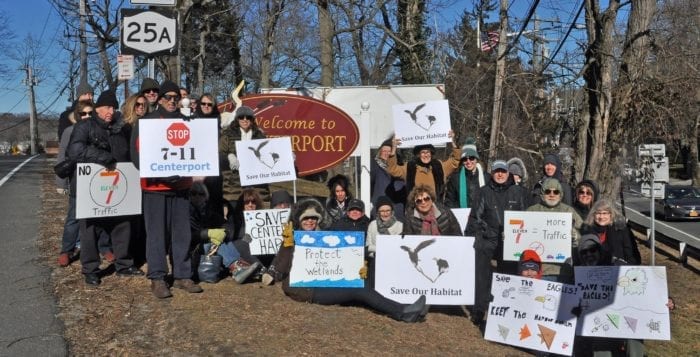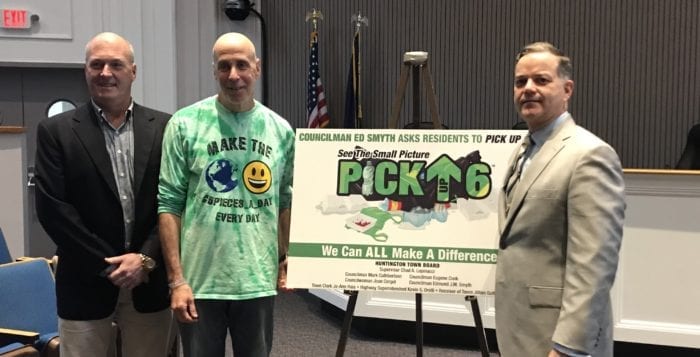Town of Huntington officials have decided to calm the fears of Centerport residents over potential water contamination that could harm and scare off local wildlife, particularly their beloved American bald eagles.
Dom Spada, deputy director of the town’s Maritime Services, said a 300-foot-long soft boom was installed Feb. 13 along the waterfront near the former Thatched Cottage site on Route 25A, which is currently under construction to become Water’s Edge.
“We did this at the request of the people from Centerport,” he said. “We’ll take a proactive approach and put the boom out to protect the water. We do not feel there’s contamination coming from the construction site.”
“We’ll take a proactive approach and put the boom out to protect the water. We do not feel there’s contamination coming from the construction site.”
— Dom Spada
The barrier is an oil-absorbent sock made of cellular fiber, approximately 8-inches in diameter, and is usually used for containing and absorbing oil-based spills, according to Spada. It will float along the top of the water and soak in lubricants and fuels without absorbing any water. It cost the town approximately $2,000 plus labor for five men needed to install it.
Over the last three weeks, Centerport residents have filed a series of complaints with New York State Department of Environmental Conservation, the U.S. Environmental Protection Agency and the town expressing concerns that construction debris and stormwater runoff after heavy rains could be contaminating the harbor.
Town Supervisor Chad Lupinacci (R) sat down Feb. 8 with Centerport residents including Tom Knight, co-president of Centerport Harbor Civic Association, and Rob Schwartz, founder of Bald Eagles of Centerport Facebook group, to discuss and address these concerns and other proposed developments including a 7-Eleven.
“I am really happy, happily surprised,” Schwartz said. “I appreciate how much they took our concerns to heart.”
On Feb. 1, Huntington’s building division received a new complaint forwarded from Suffolk County’s Department of Health Services alleging that asbestos runoff was entering the pond, according to town spokeswoman Lauren Lembo. The town told residents in the Feb. 8 meeting the county had tested the water then informed Steve Kiewra, the town’s building permits coordinator, in a phone conversation there was no evidence of asbestos runoff.
“I appreciate how much they took our concerns to heart.
— Rob Schwartz
Grace Kelly-McGovern, spokeswoman for Suffolk’s DHS, said Division of Environmental Quality employees did visit the site Feb. 1 to collect water samples from Mill Pond directly behind the former Thatched Cottage. The water will be analyzed by the county’s Public & Environmental Health Laboratory for a number of chemicals and contaminants including pesticides, metals including lead, fecal coliform bacteria, inorganic compounds, nitrogen and phosphorus. The results may take up to six weeks.
While county employees have been frequent contact with town staff in recent weeks, according to Kelly-McGovern, the results are still out as to whether or not Mill Pond has been contaminated from any source.
“Yes, our staff has been in touch with the town staff, but did not claim any testing results,” she said.
New York State DEC visited the site Feb. 5 and found the Water’s Edge in full compliance with state regulations.
Enrico Scarda, managing partner of The Crest Group constructing Water’s Edge, said his company, in full cooperation with state DEC guidelines, has sealed all manhole covers on the property and installed silt fencing with hay bales in an effort to prevent stormwater runoff from entering the pond.


























